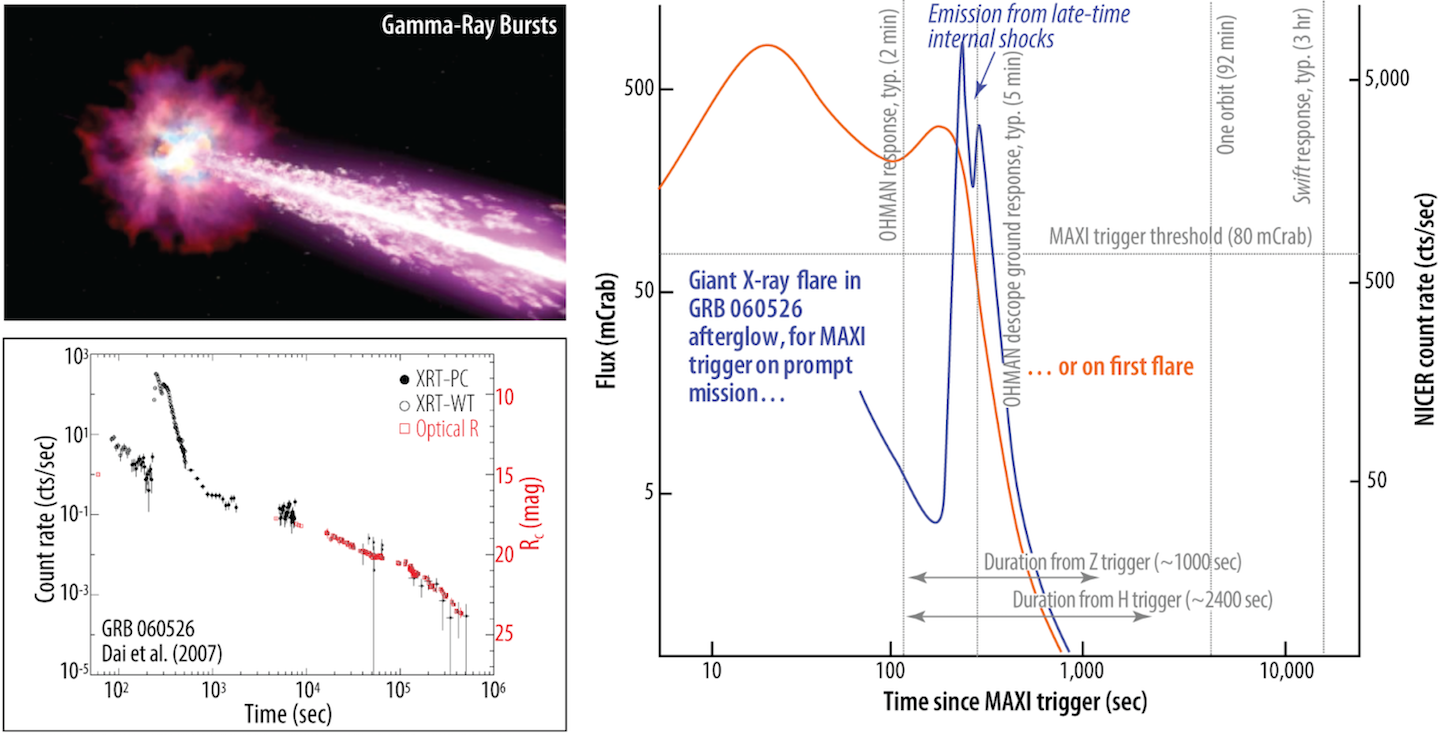NICER / ISS Science Nugget for July 25, 2019NICER's mission officially extended to 2022NICER successfully passed the 2019 SMD Astrophysics Senior Review of operating missions, and is now approved to continue science operations for at least 3 years beginning October 1, 2019. The NICER project is authorized to execute three prime mission objectives during the extended mission. The first is to continue its legacy science program to understand neutron stars through soft X-ray timing and spectroscopy. This includes continued measurements of the timing properties of pulsars over longer baselines and combined timing and spectroscopy measurements of neutron stars to determine the equation of state (EOS) of super-dense matter. The second objective is to provide NICER observing time and data to guest observers (GOs) from around the world to study a wide swath of the time-variable X-ray universe. GO proposals are solicited every year and competitively peer reviewed. Each year, more time will be made available to GOs to cover a range of scientifically interesting targets, from stellar flares to black holes and distant galaxies. The third objective is to speed up NICER's reaction time to "Targets of Opportunity" (TOOs) which can be triggered in a number of ways. There are many types of celestial objects that undergo sudden transitions from faint or completely inactive to extremely bright. Oftentimes these transients are short-lived in their brightness and a rapid response is required to extract the science from these fleeting sources, which include a wide variety of types. Transient sources that NICER will chase down include gamma-ray bursts (see figure), thermonuclear explosions on neutron stars, stellar flares, and black hole instabilities. The triggers for TOOs will come from sources on the ground and in space, including the MAXI instrument on the ISS JEM. As part of the third objective, NICER will react to triggers from MAXI in an automatic way using a laptop computer on the ISS, in order to follow up on new transients within minutes compared to hours right now. This new rapid response to MAXI is called the On-orbit Hookup of MAXI and NICER or "OHMAN".
NICER
|



